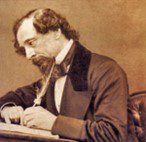Inspiring Student Character Development & Wellbeing
- The Bioview Method -
By Dr Charles Margerison
Psychologist
It is recognized that schools need to go beyond the statutory obligation to teach the curriculum and contribute to students’ character development and wellbeing. However, few teachers have received special training in these two areas.
There is a need to provide teachers, of all curriculum subjects, with a framework that can be used on a regular basis to focus on character and wellbeing issues. The Bioview Method has been used with students in the age group 8 to 18 years in the UK, USA and Australia. It has proved to be popular with students and rated by teachers as effective. This article outlines the Bioview Method and how teachers can adopt it, and gain Continuing Professional Development in the process.
What Are Bioviews?
The word ‘Bioview’ is a combination of two words – biography and interview.
In 2006, I visited the house where William Shakespeare was born in 1564 in Stratford on Avon, in England. As I toured his home, the idea of interviewing the great bard came to my mind.
If we can fly from one end of the Earth to another in 24 hours, why not fly through time to meet an amazing person and conduct a virtual interview, I thought? Therefore, I developed some questions that I would have liked to ask Shakespeare. Then, I started to write what I thought he would say about his early life, his marriage, his career and his experiences. That was the start of what I call a Bioview.
As a result, I visited the homes and places where other amazing people lived and worked. While in London, I went to St Thomas’ Hospital where Florence Nightingale famously founded her school to train nurses. Not far from there, I was able to see the room in the home where Charles Dickens wrote his famous books.

On a visit to the USA, I went to Fort Myers in Florida. There, in the same street, I was able to enter the homes of Thomas Edison and also Walt Disney, who were neighbours.
While touring Europe, I visited Salzburg, Austria, and went to Mozart’s home. In Bonn, Germany, I toured the home of Beethoven. While in Paris, France, I had the opportunity to see where Dr Marie Curie worked.
In South Africa, I made a pilgrimage to Robben Island where Nelson Mandela was imprisoned for many years. Indeed, wherever I visited there were monuments and commemorations to amazing people.
The Bioview Educational Method.
As a result of my travels and research, I have written over 500 hundred virtual interviews that include names such Dr Louis Pasteur, Dr Elizabeth Blackwell, Michelangelo, Galileo, Tchaikovsky, Harriet Tubman, as well as many others who have made amazing contributions but received little public recognition. This has led to the publication of a series of books including Amazing Scientists, Amazing Musicians, Amazing Doctors and Nurses, Amazing Engineers and Amazing Entrepreneurs. These are now available on Amazon here.

Each of the Bioviews are written in the first person singular and are based on both the facts and opinion that reflect the major challenges these people faced in their lives. As a result, the issues of character development and wellbeing are addressed.
A Bioview can be written using between 200 and 2000 words depending on the purpose and educational requirements. Indeed, I noted that many great philosophers and orators expressed their great ideas in one-line statements:-
‘All men are created equal.’ – So wrote Jefferson in the American Declaration of Independence.
‘You must be the change you wish to see in the world,’ stated Mahatma Gandhi.
These short sentences are characteristic of Bioviews.
I prefer the one sentence per line format, rather than conventional prose. It enables the writer to make a statement that is easily read and understood. In my experience, many students find it easier to express their thoughts in this way. However, Bioviews can also be written in traditional prose style.
In all Bioviews, the author should focus on the achievements and action in the life of the person about whom they choose to write. They should write about what the person did, as well as why and how they did what they did. In doing so, they can reflect on aspects of the person’s character and wellbein
Bioview Writing – Axioms
As a guide to the writing of Bioviews, I have developed a number of axioms which summarize the educational and personal learning issues:-

1 – Axiom of Personal Bioview Learning – This proposes that a student will learn more about their own character development and wellbeing issues if they have interest in, and study, the life of an inspiring person via the Bioview Method.
2 – Axiom of Learning Motivation – This proposes that a student’s curiosity and commitment to learning about character, wellbeing and achievement capabilities will increase by discussing with others and setting challenging questions for a journalistic Bioview investigation.
3 – Axiom of Biographical Research – This proposes that a student’s abilities to research both objective and subjective issues associated with the philosophy, psychology and sociology of the lives of inspirational people will improve as they complete more Bioviews.
4 – Axiom of Understanding Self and Others – This proposes that a student’s ability to empathize with others, and also understand their own character and wellbeing issues, will improve by researching and writing the Bioviews of people they regard as inspirational.
5 – Axiom of Personal Development – This proposes that personal reflection on the process and content of each Bioview biographical project, via discussion and writing, will improve the student’s confidence to develop their own character and wellbeing plan for self-development and will help guide the student’s behaviour and life choices.
Educators’s Role
The role of the educator is that of a facilitator and/or consultant advisor to help students explore their character and wellbeing, and identify any issues and how they can be addressed. This can be best achieved by establishing students into groups of 3 or 4 to discuss important questions.
For example, students can be asked to read a Bioview on the life of Shakespeare or Marie Curie and share their views on what enabled that person to succeed. Students can also choose people who they admire in their own family , and share with their group why they are inspired by that person.
 Helping students to go out into the community to interview nurses, fire fighters, the police, and other community workers will help them to develop their own personal Bioview. Afterwards, they will learn a lot about character and wellbeing by sharing what they discovered and hearing what other students discovered.
Helping students to go out into the community to interview nurses, fire fighters, the police, and other community workers will help them to develop their own personal Bioview. Afterwards, they will learn a lot about character and wellbeing by sharing what they discovered and hearing what other students discovered.
The more students focus ways of sharing their views and developing their own character and wellbeing plans, the stronger they will be.
Summary
To understand how they can make a success of their lives students can learn from those who previously made good use of their time. By researching the lives of amazing people, who converted ideas into achievements, student’s can raise their levels of aspiration and ambition. In the process, they will gain the ability to write their own life scripts by choosing important issues and priorities. By understanding the contributions and achievements of amazing people, in the context of their culture and time, students can also become inspired to make important contributions and achievements in their own









